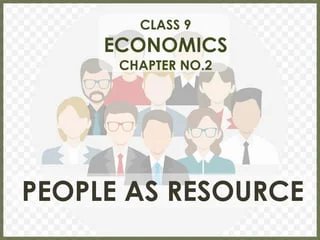Money and Credit - Class 10
Money and Credit is a subject that explores the concepts of money, credit, and their role in the economy. It covers topics such as the functions of money, different types of money, the creation of credit, and the role of banks in the financial system. Key areas of focus in the study of Money and Credit: Functions of money: Medium of exchange, store of value, unit of account, and standard of deferred payment. Types of money: Currency, demand deposits, and other forms of money. Creation of credit: The process by which banks create money through lending. Role of banks: The functions of banks, including accepting deposits, lending money, and facilitating payments. Financial markets: The different types of financial markets and their role in the economy. Monetary policy: The government's policies related to controlling the supply of money in the economy. This subject aims to provide students with a basic understanding of the financial system and how money and credit play a crucial role in economic activity. অর্থ ও ঋণ এমন একটি বিষয় যা অর্থ, ঋণ এবং অর্থনীতিতে তাদের ভূমিকার ধারণাগুলি অন্বেষণ করে। এতে অর্থের কার্যকারিতা, বিভিন্ন ধরনের অর্থ, ঋণ সৃষ্টি এবং আর্থিক ব্যবস্থায় ব্যাঙ্কগুলির ভূমিকার মতো বিষয়গুলি অন্তর্ভুক্ত রয়েছে। অর্থ ও ঋণের অধ্যয়নের মূল ক্ষেত্রগুলিঃ অর্থের কার্যাবলীঃ বিনিময়ের মাধ্যম, মূল্যের সঞ্চয়, অ্যাকাউন্টের একক এবং বিলম্বিত অর্থপ্রদানের মান। অর্থের প্রকারঃ মুদ্রা, ডিমান্ড ডিপোজিট এবং অন্যান্য ধরনের অর্থ। ঋণের সৃষ্টিঃ যে প্রক্রিয়ায় ব্যাঙ্কগুলি ঋণের মাধ্যমে অর্থ তৈরি করে। ব্যাঙ্কগুলির ভূমিকাঃ আমানত গ্রহণ, অর্থ ধার দেওয়া এবং অর্থপ্রদানের সুবিধার্থে ব্যাঙ্কগুলির কাজ। আর্থিক বাজারঃ বিভিন্ন ধরনের আর্থিক বাজার এবং অর্থনীতিতে তাদের ভূমিকা। মুদ্রা নীতিঃ অর্থনীতিতে অর্থের সরবরাহ নিয়ন্ত্রণ সম্পর্কিত সরকারের নীতি। এই বিষয়টির লক্ষ্য হল শিক্ষার্থীদের আর্থিক ব্যবস্থা এবং কীভাবে অর্থ ও ঋণ অর্থনৈতিক ক্রিয়াকলাপে গুরুত্বপূর্ণ ভূমিকা পালন করে সে সম্পর্কে একটি মৌলিক ধারণা প্রদান করা।
English
Last updated
Wed, 27-Nov-2024



















